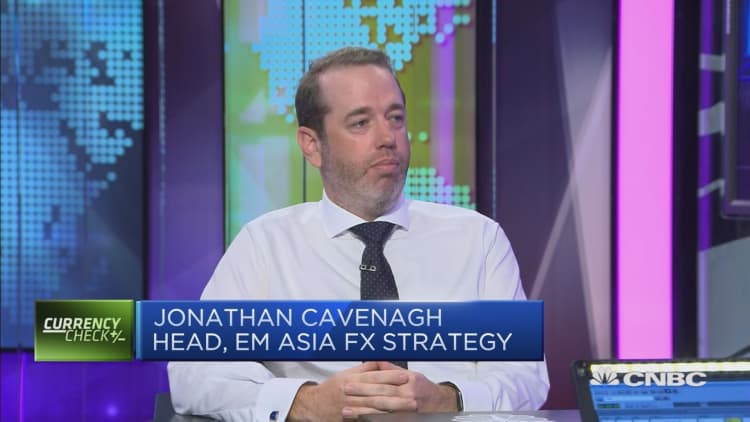The euro jumped on Tuesday following a report that the European Central Bank will debate winding down its quantitative easing program.
Bloomberg News reported the ECB sees its June 14 meeting as a live one, which could end with the central bank ceasing its asset purchases.
In early evening trading, the common currency traded 0.15 percent higher against the dollar at $1.1715.
"The most recent data out of the euro zone has dampened expectations for near-term change in monetary policy by the ECB," Esiner said.
"The (Bloomberg) report suggests that the ECB may be looking past the softness in economic data out of the euro zone, and the political headwinds in Italy to focus on a gradual normalization of monetary policy," he added.
Markets have not been expecting an announcement on QE this month given the uncertainty caused by the Italian political situation. The euro also gained after Italian Prime Minister Giuseppe Conte said Italy has no plans to exit the euro, dispelling some fears of an euroskeptic Italian government.
"Conte's comments were reassuring to investors given the make-up of the Italian coalition and its previous statements and certainly helped pushed the euro higher," said Omer Esiner, chief market analyst, at Commonwealth Foreign Exchange in Washington.
Meanwhile, the U.S. dollar, fell, reversing earlier gains from a brighter economic outlook that has made an interest rate hike by the Federal Reserve next week a near-certainty.
"The story of U.S. data outperforming data around the world, especially in Europe, the UK, and Japan remains intact for now," said Brad Bechtel, managing director, at Jefferies in New York.
But he noted that external factors that have influenced the dollar such as the Italian political crisis and trade tariffs have already built into the currency price.
"The U.S. dollar is going to be a bit range-bound for now with a firm undertone," said Bechtel.
In afternoon trading, the dollar lost 0.14 percent to 93.89 against a currency basket. It hit 95.02 last week, its highest since early November and has risen nearly six percent since mid-April.
The Mexican peso, meanwhile, fell to a more than one-year low against the dollar, which was last up 1.83 percent at 20.443 pesos.
Against the , the U.S. currency rose 0.31 percent to C$1.2967.
Mexico said it will impose a 20-percent tariff on U.S. pork imports after U.S. President Donald Trump slapped tariffs on steel and aluminium. The tariff was in response to the Trump administration's decision last week to impose steel and aluminum tariffs on Mexican exporters on grounds that countries including Mexico engage in competition damaging to U.S. national security.

--CNBC's Chloe Aiello contributed to this report.

